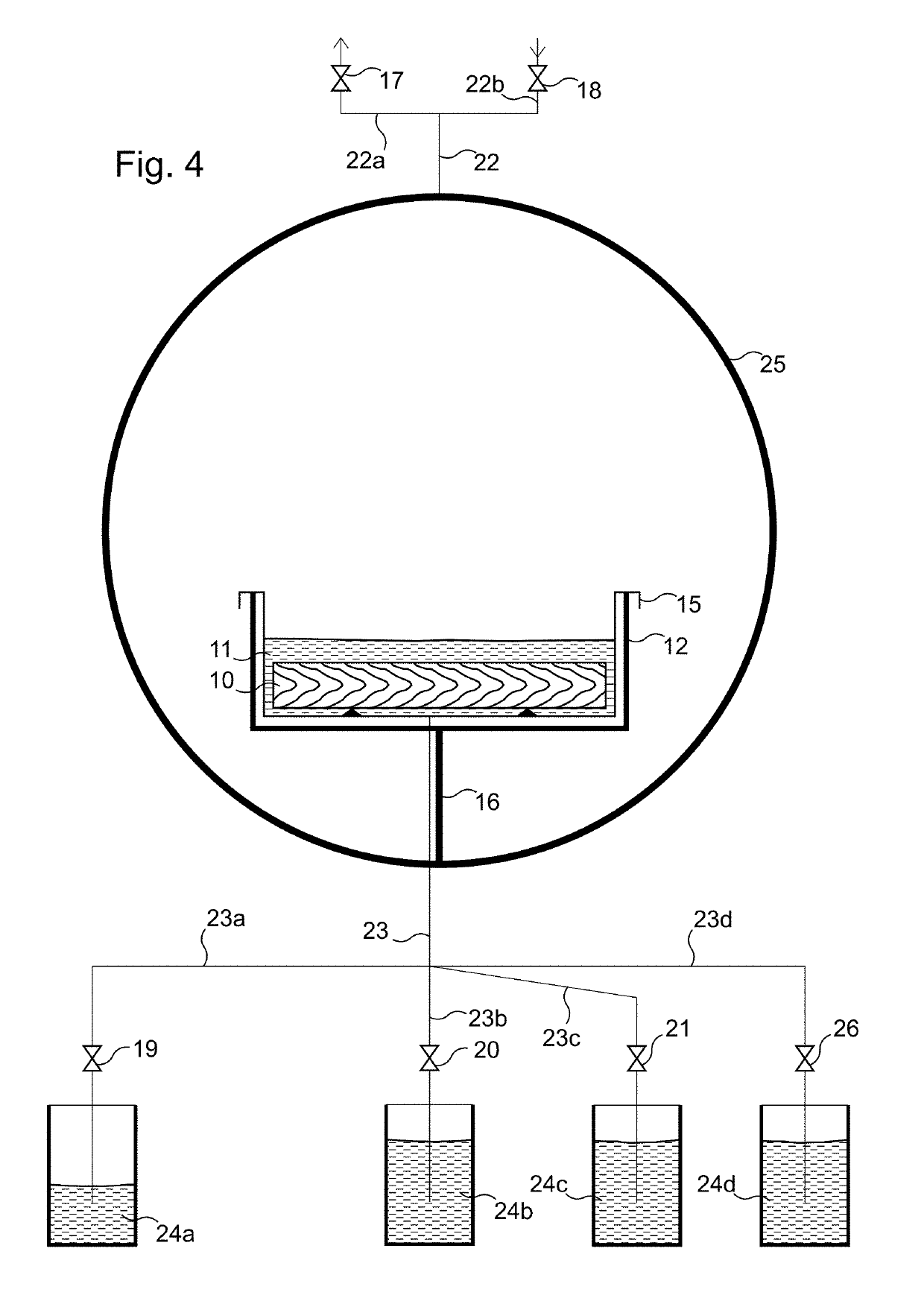Process for partial delignification and filling of a lignocellulosic material, and composite material structure able to be obtained by this process
a lignocellulosic material and partial delignification technology, which is applied in the field of partial delignification and filling of lignocellulosic material, and the acquisition of composite material structure by this process, can solve the problems of long process, no satisfactory solution, and slow method, and achieves improved compactness, improved crystallinity of lignocellulosic structure, and improved compactness
- Summary
- Abstract
- Description
- Claims
- Application Information
AI Technical Summary
Benefits of technology
Problems solved by technology
Method used
Image
Examples
example 1
ccording to the Invention for Treating a Structure of Fir
[0289]A parallelepiped sample of fir wood of dimensions 0.5 cm×4 cm×8.5 cm (b×l×h) was subjected to the treatment process according to the invention, which, in the context of laboratory experiments, enabled a composite specimen to be obtained of dimensions 0.45 cm×3.6 cm×8.2 cm (b×l×h).
[0290]The chamber used was a vacuum oven (25).
[0291]Thus, the sample was treated during a first soaking step (1) by means of three identical successive sub-steps, each consisting of an immersion of the sample in a solution of 6% sodium chloride and 0.05% sodium hydroxide, under a vacuum, at a constant temperature of 70° C. for 5 hours.
[0292]The washing step (2) of the sample was next implemented, by immersion of the sample resulting from the preceding soaking step (1), by means of 4 identical successive sub-steps, each consisting of immersion of the sample resulting from the preceding step or sub-step in a solution of 99% ethanol, under a vacuum...
example 2
n of the Composite Fir Structure Resulting from the Treatment Process According to the Invention and Obtained in Example 1
[0304]The fir sample forming a composite fir structure obtained in Example 1 was evaluated not only for its properties of mechanical strength but also for its optical properties.
[0305]Mechanical Tests Illustrated by FIGS. 17 to 22
[0306]Bending Measurement Illustrated by FIGS. 17 and 18
[0307]This measurement was carried out on samples of fir of size 0.7 cm×2.5 cm×10 cm (b×l×h), according to a method developed by the applicant comprising three identical pulleys (39), of 3 cm diameter, applying bending to the structure. These three pulleys (39) were spaced pairwise by 3.5 cm, the distance between the furthest two pulleys (39) being 7 cm.
[0308]FIG. 17 represents the diagram of the principle of measuring the bending of the fir sample forming a composite fir structure (38) according to the invention.
[0309]As can be seen in FIG. 17, a force F was applied to the sample, ...
PUM
 Login to View More
Login to View More Abstract
Description
Claims
Application Information
 Login to View More
Login to View More - R&D
- Intellectual Property
- Life Sciences
- Materials
- Tech Scout
- Unparalleled Data Quality
- Higher Quality Content
- 60% Fewer Hallucinations
Browse by: Latest US Patents, China's latest patents, Technical Efficacy Thesaurus, Application Domain, Technology Topic, Popular Technical Reports.
© 2025 PatSnap. All rights reserved.Legal|Privacy policy|Modern Slavery Act Transparency Statement|Sitemap|About US| Contact US: help@patsnap.com



